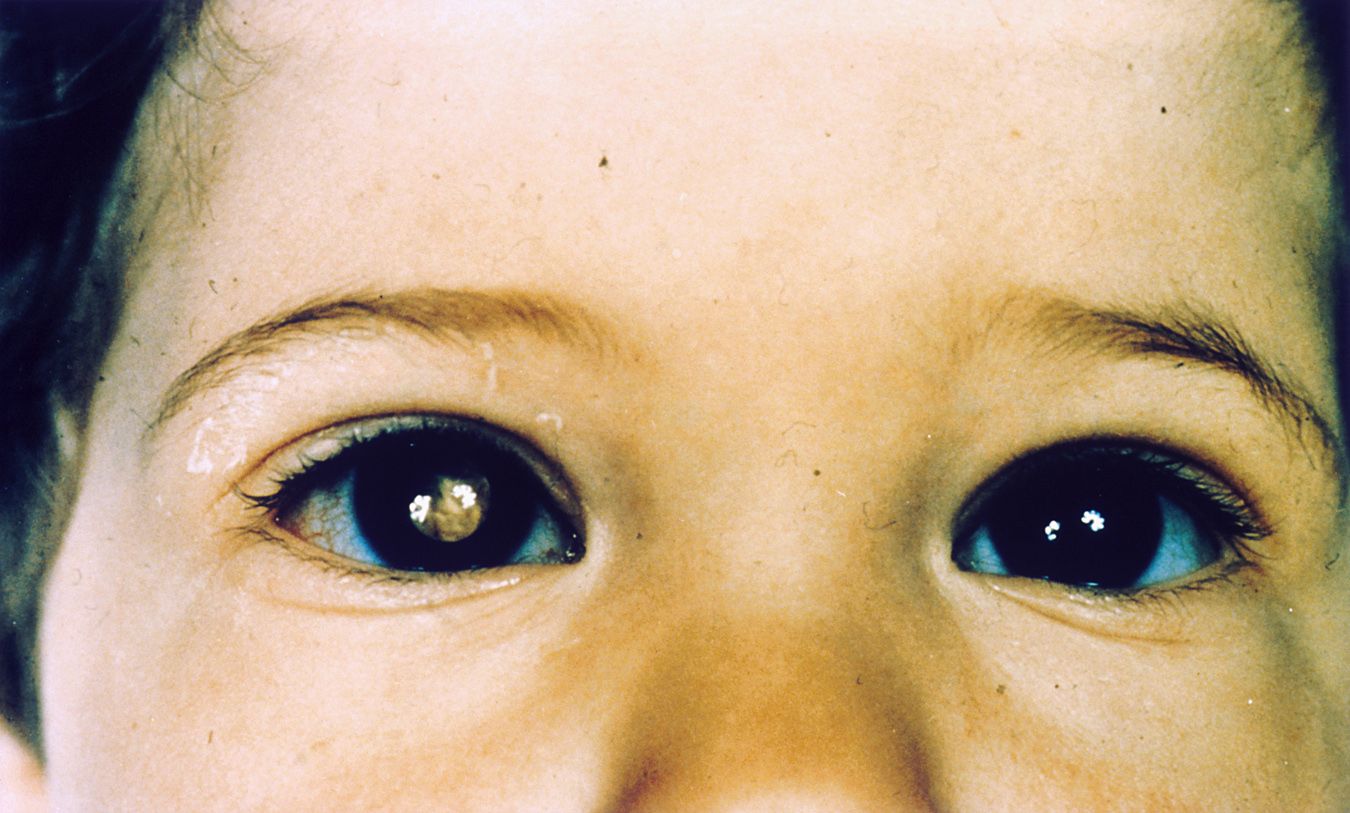Toddler's Glowing Eye: What Is Retinoblastoma?

A boy in Illinois whose left eye glowed with white light in a cellphone photo turned out to have a rare type of cancer that's diagnosed in only a few hundred U.S. children each year.
The boy's mother, Julie Fitzgerald, thought she noticed something at the back of her 2-year-old son's eye when she looked at his eye in the light, according to the local TV station WREX, which reported the story.
Fitzgerald read online about how a white glow in the eye in photos, instead of a red eye, could be a symptom of eye cancer. This spurred her to take a cellphone picture of her son's eye.
"His whole pupil was just white, and that's when I knew," Fitzgerald told WREX.
Her son was diagnosed with retinoblastoma, a rare type of eye cancer that usually develops in early childhood. About 250 to 350 children in the United States are diagnosed with retinoblastoma each year, according to the National Institutes of Health. [16 Oddest Medical Cases]
Retinoblastoma is a cancer of the retina, which is the tissue at the back of the eye that is sensitive to light. In most cases, the cancer develops only in one eye, as was the case with Fitzgerald's son, but some children can have cancer in both eyes if they have a hereditary form of the disease, according to St. Jude Children's Research Hospital.
One symptom of retinoblastoma is known as "cat's eye," or a white or yellow glow in the pupil, which is often first noticed in a photo that has been taken with a flash, St. Jude's says. In fact, there have been several reports over the years of people who first noticed retinoblastoma after taking a picture. Last month, a mother in Arizona found retinoblastoma in her child's eye after noticing a white glow there in baby pictures, according to a local TV station KPHO/KTVK.
Get the world’s most fascinating discoveries delivered straight to your inbox.
The disease is usually curable if caught early, but if left untreated, the cancer can spread and become life threatening, the NIH says.
In Fitzgerald's case, her son's eye was removed with surgery, and it appears that all the cancer has been removed.
Follow Rachael Rettner @RachaelRettner. Follow Live Science @livescience, Facebook & Google+. Original article on Live Science.

Rachael is a Live Science contributor, and was a former channel editor and senior writer for Live Science between 2010 and 2022. She has a master's degree in journalism from New York University's Science, Health and Environmental Reporting Program. She also holds a B.S. in molecular biology and an M.S. in biology from the University of California, San Diego. Her work has appeared in Scienceline, The Washington Post and Scientific American.


